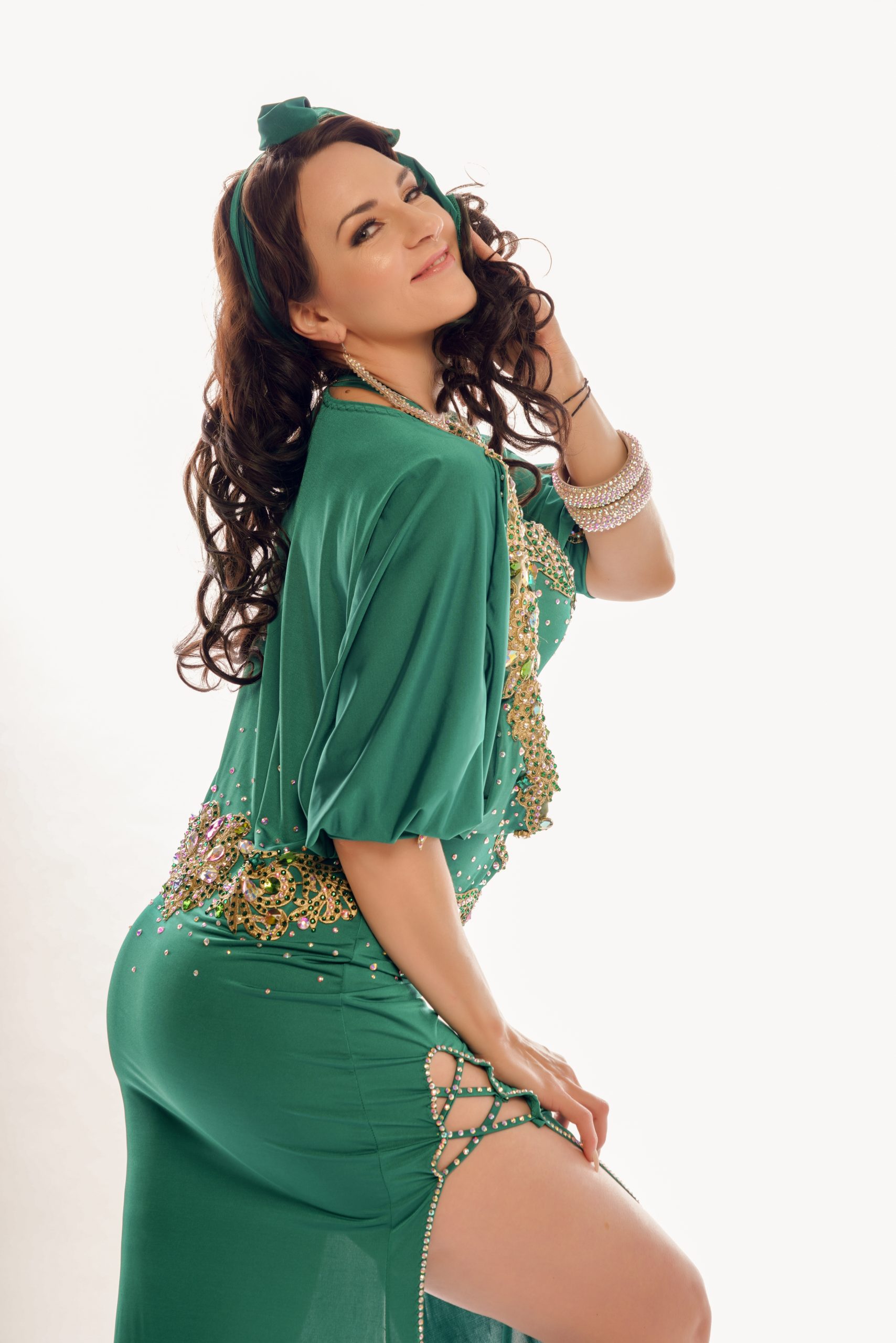
Raqs Baladi
Last Updated on August 30, 2023 by
Raqs baladi / baladi dance is characterized by the rich & playful accordion, flirty funky percussion, and that general demeanour of a strong sassy dancer.
First off – the world ‘balad’ / ‘baladi’ means “country, my country”. You can find baladi bread, baladi dogs, baladi vegetables in Egypt everywhere. It means something of the country, rustic, unrefined, earthy and patriotic in that sense.
Raqs baladi translates roughly to “country dance” which essentially means its the social dance of the people. This is thought to be the ‘original’ form of what we know of raqs sharqi today, and you can find raqs baladi in every home across Egypt. This is the dance being done at ladies parties & other social events, the kitchen dances & around the fire.
Raqs baladi is a way to express joy, happiness, celebration and truly dance from the heart. There is no formal training & dancers learn from watching each other & simply join in. Raqs baladi is a social dance above & beyond!
Raqs baladi is characterized by big, earthy movements that are full and expressive typically with flat feet. There is alot of hip work, isolations and a general heaviness. The arms are not structured and are free framing the body. The upper body accentuates the music with chest movements such as drops, shimmies, lifts and circles.
The baladi energy is more commanding & internal with a strong attitude, coquettish & playful manner.
It is opposite to that of a raqs sharqi dancer who uses an elegant & tall postures, intricate footwork & big sweeping movements on stage.
Baladi music was the main genre of music up to the 1970s when shaabi emerged from baladi & gained popularity.
Baladi genres
Baladi music is a WHOLE genre – the progression is only one type!
Tahmilla: In more modern baladi, the singer is singing about the dancer before she takes the stage. The tahmilla might appear at the end of the song again to close out the song, but not always.
Taqasim: the melodic section of a baladi where its an improvised solo by one instrument, typically the accordion.
Mawel: may appear in a baladi and can also be found in many parts of a baladi. This is the vocal version of a taqasim sung by a singer usually backed by a drone of an accordion or keyboard. Usually the singer is lamenting “ya layali ya layali”. Often gives advice, tells a story or a warning.
Ashara baladi: often known as a beledi progression.
Awadi: the “call & answer” component often following the taqasim in a baladi. Characterized by the drum starting first “talking” and the melodic instruments answering. See example here.
Aminti billel: the male baladi – the only baladi genre men dance to, usually with a stick. This section is derived from a very old famous song “Aminti billel” See an example of this style here.
Hassan: usually follows aminti billel seamlessly in an ashara baladi. Again derived from a very old song “Hassan ya ghouli”. See an example of hassan here.
Tet: the faster component towards the end of a baladi where you can literally hear the instruments going “tet, tet, tet”. Could be a maqsoum or fellahi rhythm. Tet could also reappear after the fadhy (drum solo) or appear somewhere else.
Eskanderia: another baladi style. The beginning of this song is representative of eskandereya style.
Fahdi: The drum solo section in a baladi, “Fahdi” means empty – so it is just the drum minus any accompanying instruments.
Baladi Costume
The typical baladi galabeya is a long, loose fitting galabeya (think Fifi!) with a hip scarf tied to emphasize the hips. More modern costumes now have a cut out for the bra to show. The sleeves are form fitting and either full length or 3/4 length.
Accessories are big and chunky – no delicate rhinestone bracelets here. Fifi Abdo started a trend by always wearing something around her ankle and so many dancers today do the same.
Baladi music
This music has not traditionally been touched by western music they way that classical Egyptian music adapted. Instruments such as the accordion, saxophone, tabla, nay and violin are featured instruments.
Rhythms such as the maqsoum, masmoudi saghir, saidi, fellahi are usually used.
Questions about raqs baladi? Contact me here!
Sorry, the comment form is closed at this time.